I'm back from a lovely, long summer break - it was definitely very summery and quite, quite hot. In fact, it was hotter than I'd have needed...
We spent some time with friends, and went on holidays to Finland to see the midnight sun. If you're used to nights being dark, even at the height of summer, it feels surreal to be in a place where it just doesn't get dark at all. We made good use of the night light - and had naps in the afternoon to make up for that, too.
Finland is a really beautiful country, with a lot of forest and an incredible amount of lakes. Our plan was to do some lake exploration via canoe, so we had a rental canoe for a few days, a map of a part of the lake district... and, unfortunately, a lot of (head)wind. So much wind that we had to change our plans regarding the tour and shorten it a bit. After all, we were on holidays and not on a torture-yourself-mission...
It was nice to paddle, though we had underestimated two things: the size of the lakes and the amount of summer cottages on their shores (and on the islands in the lakes). Having paddled the German Mecklenburger Seenplatte, I was subconsciously expecting something similar only larger - and yes, the Finnish lake district is much larger, but the lakes themselves also are much, much larger. That means a lot of open water to paddle through. Now that, in decent weather and by itself, is technically not a problem - but it felt like we were not getting ahead at all, because the perspective on those large lakes, when you are paddling towards something in the far-ish distance, just does not change much. We usually paddle at about 4 km per hour if on flat water with no significant wind influence, which is not so fast that you can see things change quickly... hence it felt, sometimes, like standing at one point and paddling forever. It got better, at least for me, towards the end of our tour, since you sort of learn that it just feels like you're in one spot but you are actually moving, but the general effect was still there.
The second underestimated thing really were the cottages. I knew that in Finland, having a summer cottage is totally a thing and about every family has at least one - but I never made the next step in thinking about this: All these cottages have to be somewhere. That's just logical, right? Well, one premium spot to put a summer cottage is, obviously, in a nice, quiet, secluded(ish) place on the shore of a lake... which meant that there were some stretches on our trip where you could not land your canoe unless you wanted to do so on somebody's more-or-less front lawn.
So basically, you were in nature, with very few other humans to be seen, but with traces of human habitation and civilisation everywhere (in form of the cottages, mostly). There was very little in terms of infrastructure though - no cafés or shops like you'd find at every stone throw in Mecklenburg. We had brought our own food, and water logistics stuff (a filter and a UV water sterilisation pen, because you don't want to catch a nasty stomach bug especially while on holidays), and that was quite necessary. We also had our trusty little tent and put that up on our own tiny private islands for several nights, which was a lot of fun and felt really special for us. (In Finland, you can put your tent up about everywhere, though common decency demands not to do that on someone else's front lawn. In Germany, there's a general prohibition against so-called "wild camping"; you can ask the owners of land if you may put up your tent there, or use designated spaces which you can find in limited numbers in some areas, but you're not allowed to just pitch it anywhere else. In many areas, that means you need to find the next commercial campsite... which will be populated with other people and cost you money, but - on the upside - will provide you with sanitary installations and typically a little shop, café, and the possibility to get fresh baked goods in the morning. However, all that means that just going "ah, here's a nice spot, let's use that" is not something we're used to.)
Our method of travel - trains and ferries - also worked very well. Going all the way up north that way did take a good bit of time altogether, but most of our travelling was done at night, with overnight ferries and night trains, and that was very, very pleasant. We had planned the journeys basically so that we would travel in the night and then spend the day in the town before moving on through the night again. It means declaring the journey a part of the holidays, and that was what we did, and thoroughly enjoyed it. I can highly recommend this! Finnish night trains are also quite nice and comfy, and you can even have a 2 person cabin with your own toilet and shower. So you spend a nice day wandering a city, doing a bit of sight-seeing, then go to the train station in the evening, board your train and have a relaxing hot shower while racing through the Finnish landscape before crawling into bed - and then you wake up the next morning somewhere else. Ah, it's just wonderful.
(If you're planning travel like this, and you use a train to get to your night travelling thingie, make sure you leave enough of a time gap before your night train or ferry leaves, just in case your previous transport is delayed for some reason. It will make the overall travel time a bit longer, but reduces stress immensely - and you can always go for a little stroll to stretch your legs if you are on time, and have a coffee or something to eat a few metres away from the train station.)
And now it's time to get back to good old work! There's a few projects to finish, and other things coming up, such as the embroidery demonstration in Brandenburg. First, though: Sending off all the orders that arrived during the summer break.
(This post, weirdly, did not have its correct date when I posted it, but one in June. Don't ask me how that happened.)




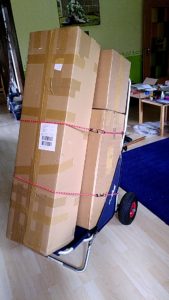
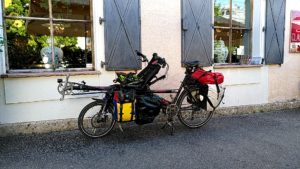 The bike, loaded up with all our gear.
The bike, loaded up with all our gear.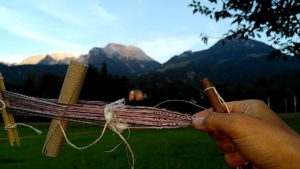 Proof of the travelling pharaoh!
Proof of the travelling pharaoh!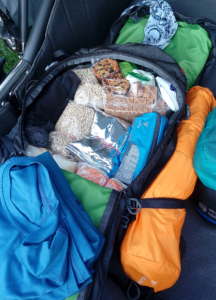 This pack contains... mostly food. Or so it felt!
This pack contains... mostly food. Or so it felt!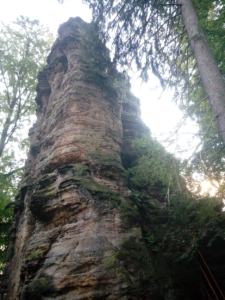
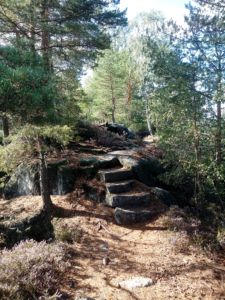 Stone steps in the middle of nowhere - a rather frequent occurrence.
Stone steps in the middle of nowhere - a rather frequent occurrence.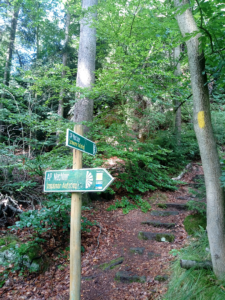 You can be sure that if there's a "comfy ascent" and a "steep ascent", the Forststeig will send you up the former.
You can be sure that if there's a "comfy ascent" and a "steep ascent", the Forststeig will send you up the former.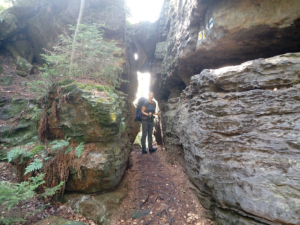 In some spaces, the stones are close enough together that my backpack touched both sides of the gap...
In some spaces, the stones are close enough together that my backpack touched both sides of the gap...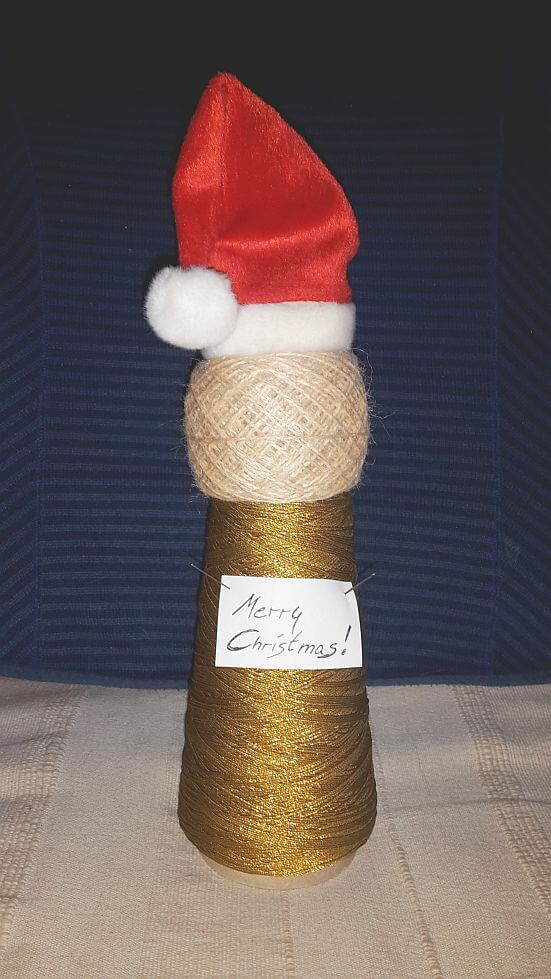
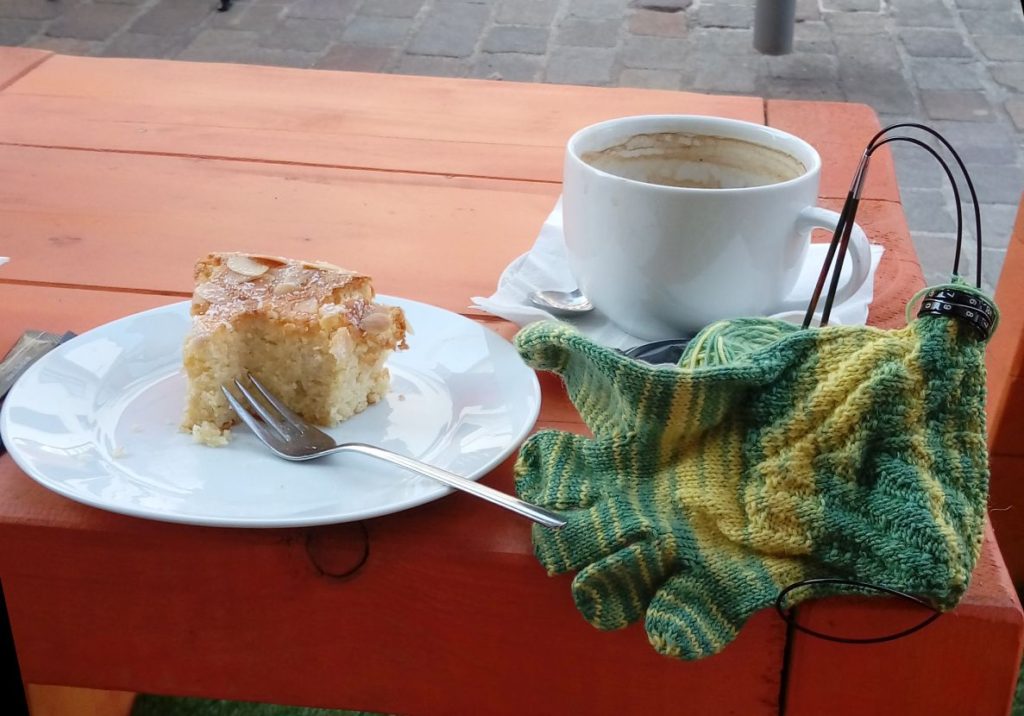 Cake, coffee, and knitting socks in Torgau - not my knitting, mind you.
Cake, coffee, and knitting socks in Torgau - not my knitting, mind you.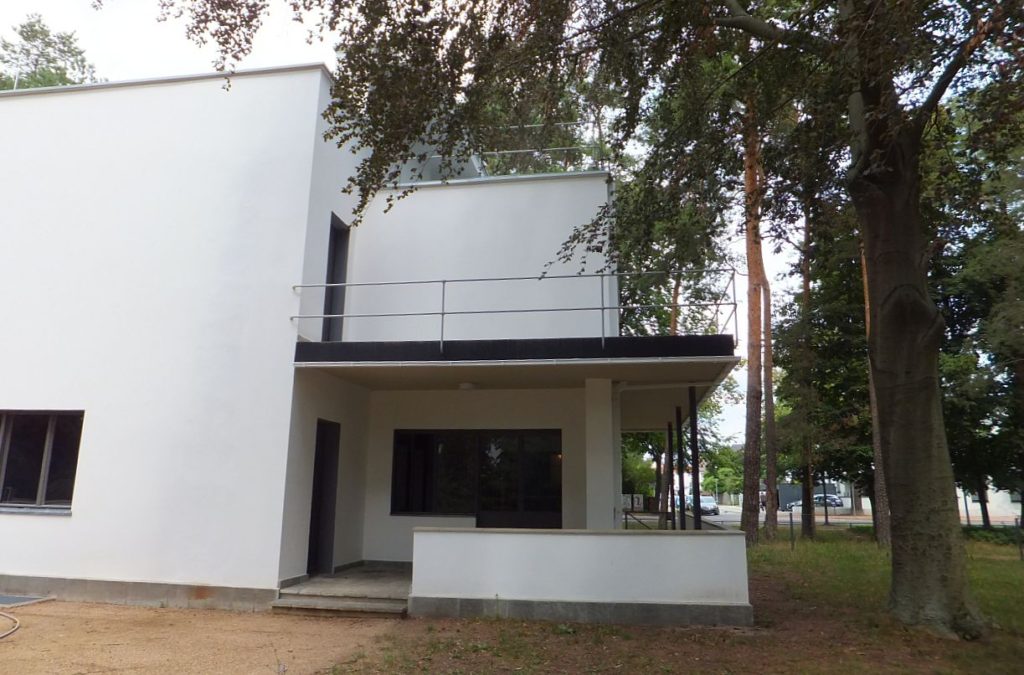 Meisterhaus in Dessau
Meisterhaus in Dessau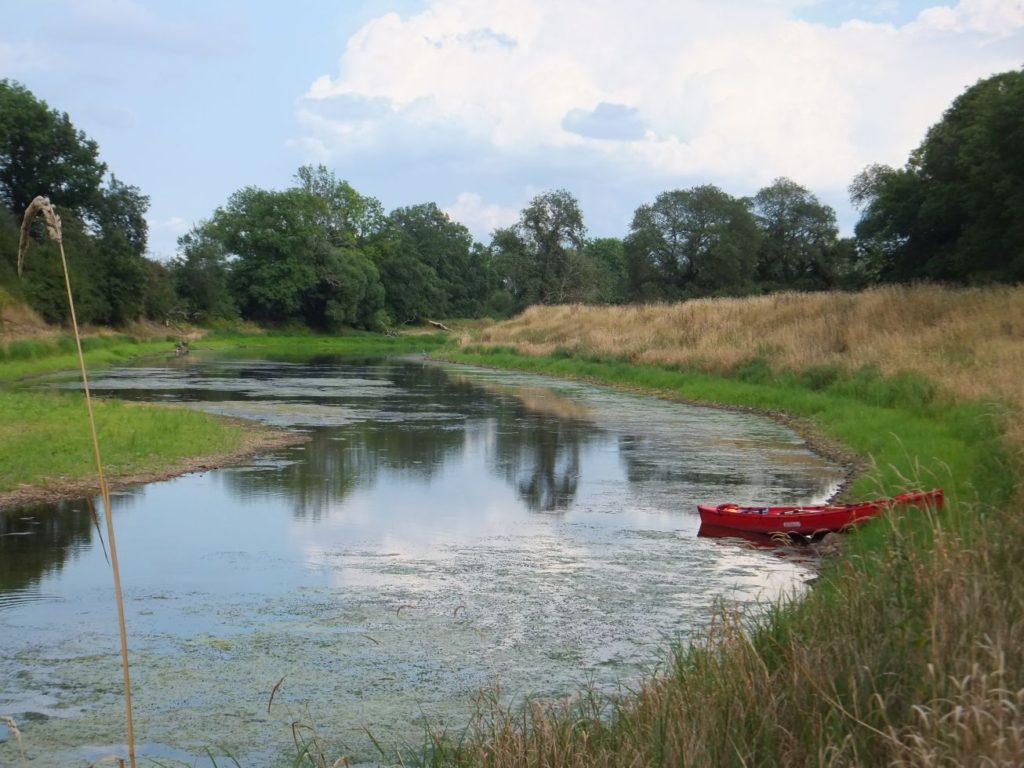
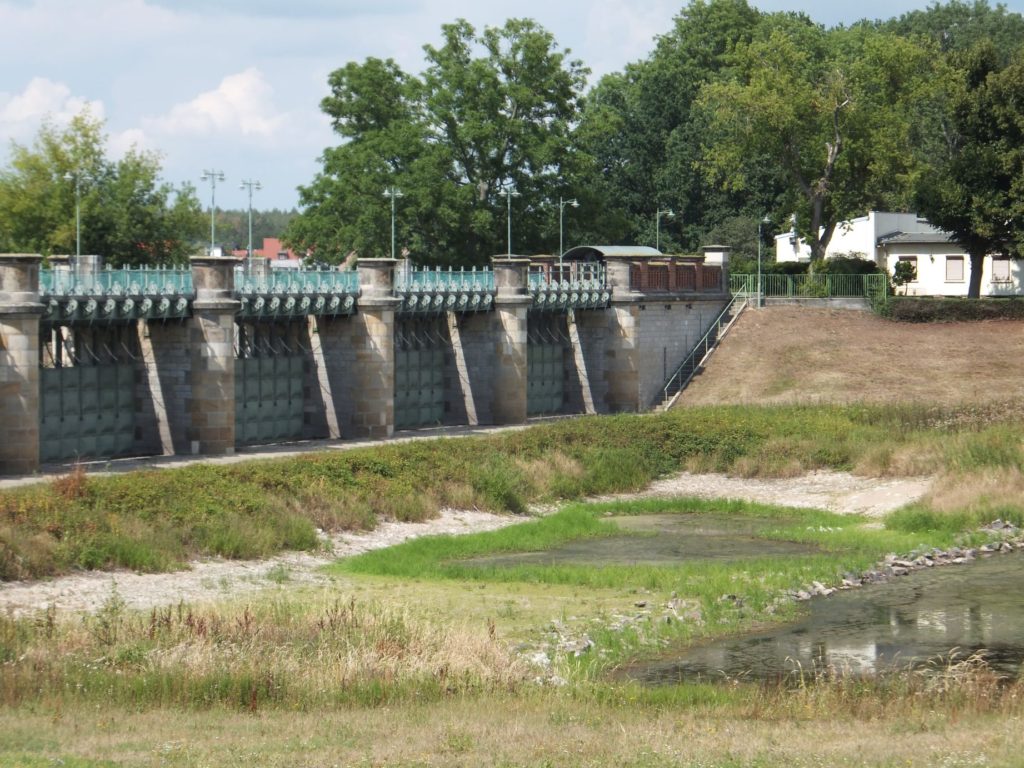 Pretziener Tafelwehr
Pretziener Tafelwehr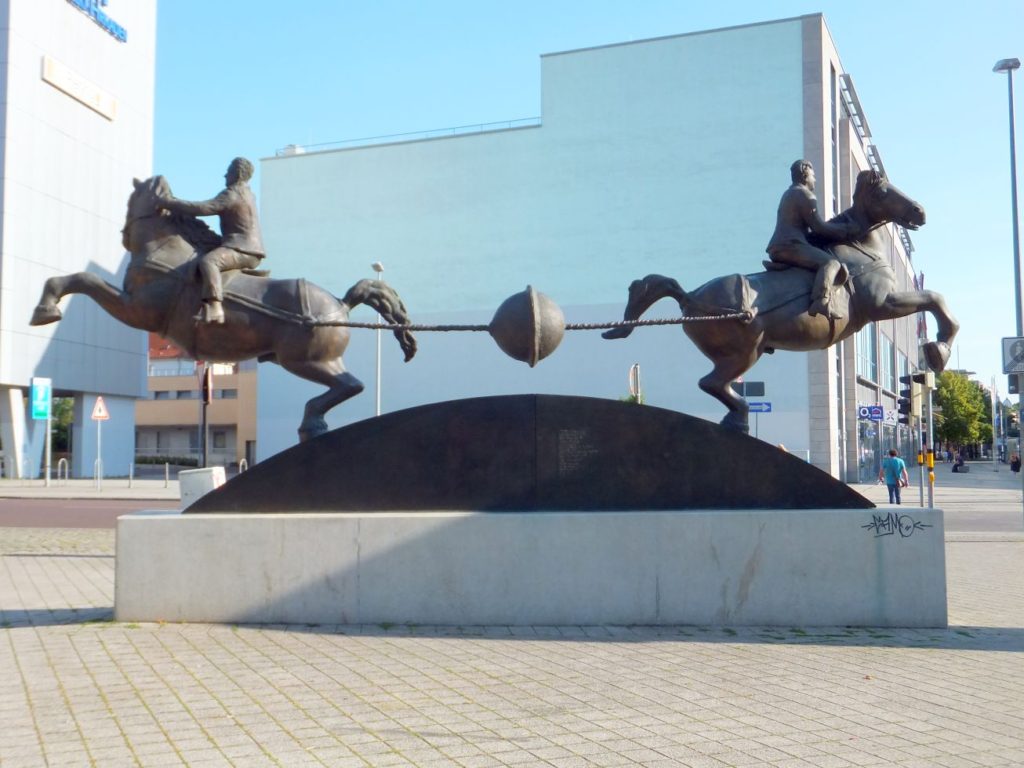 Otto von Guericke and the
Otto von Guericke and the 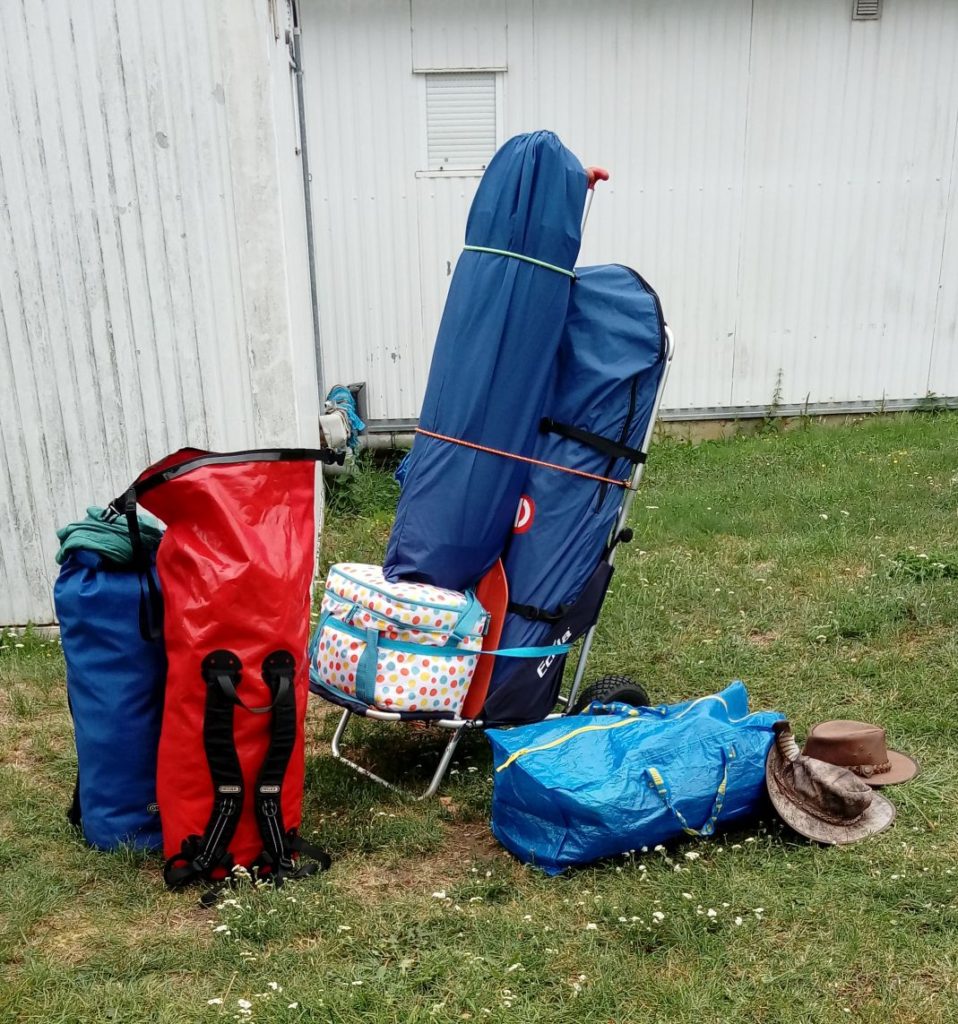 Ready for the trip home... all packed up.
Ready for the trip home... all packed up.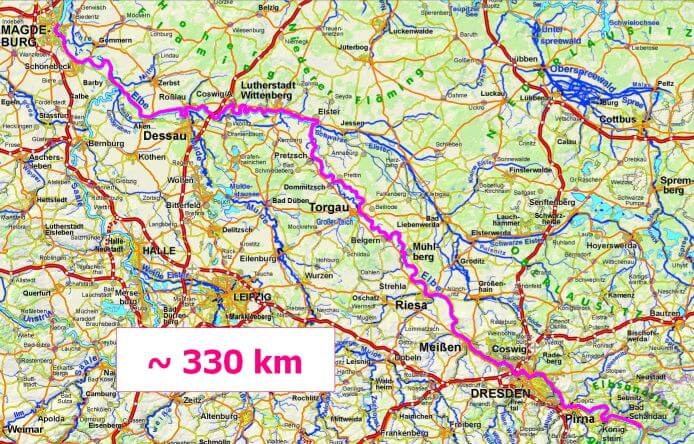 Our complete tour: a bit more than 330 km in 11.5 days of paddling.
Our complete tour: a bit more than 330 km in 11.5 days of paddling.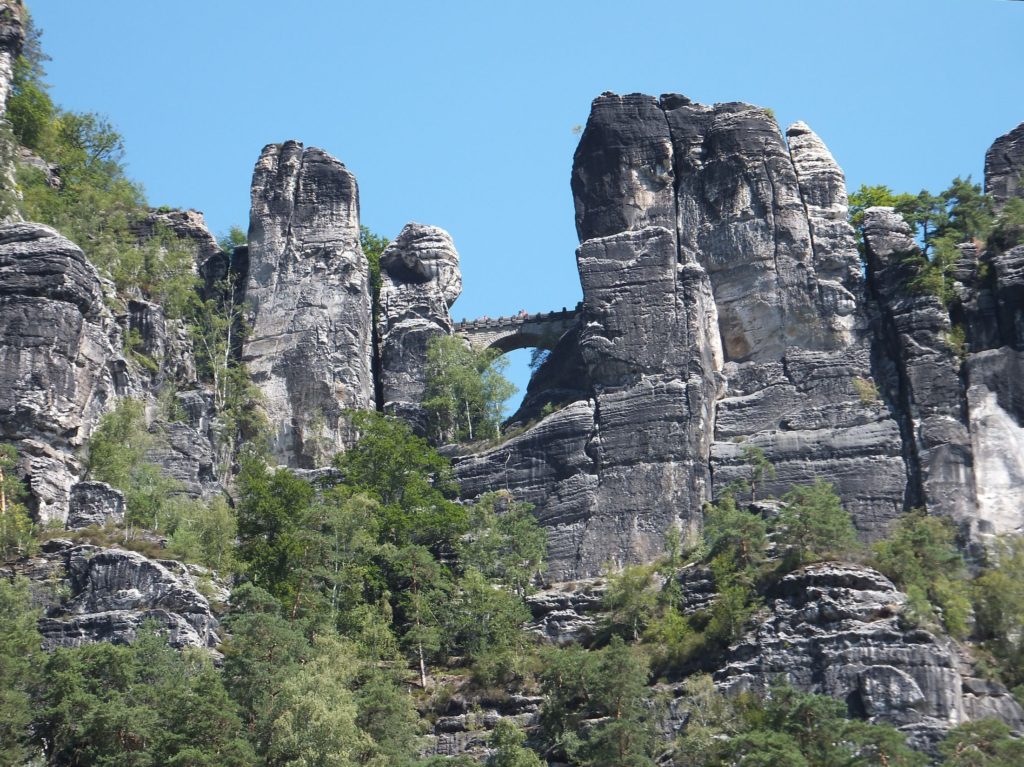 From Königstein to Pillnitz - Bastei near Rathen
From Königstein to Pillnitz - Bastei near Rathen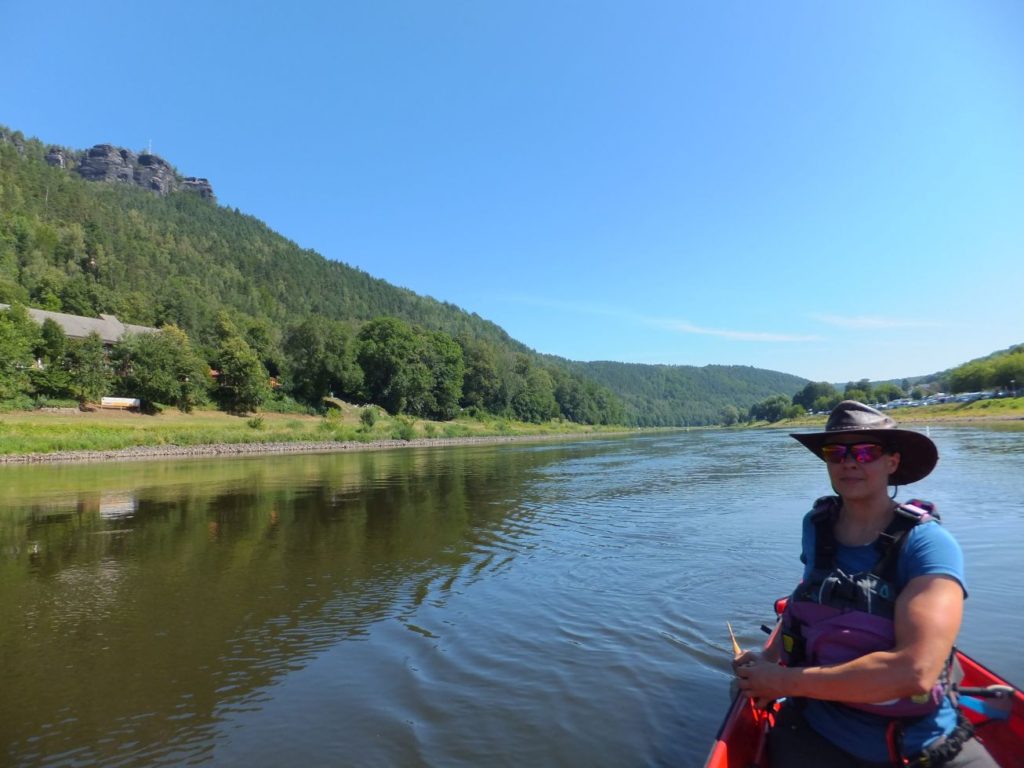 Just taking out the paddle after steering...
Just taking out the paddle after steering...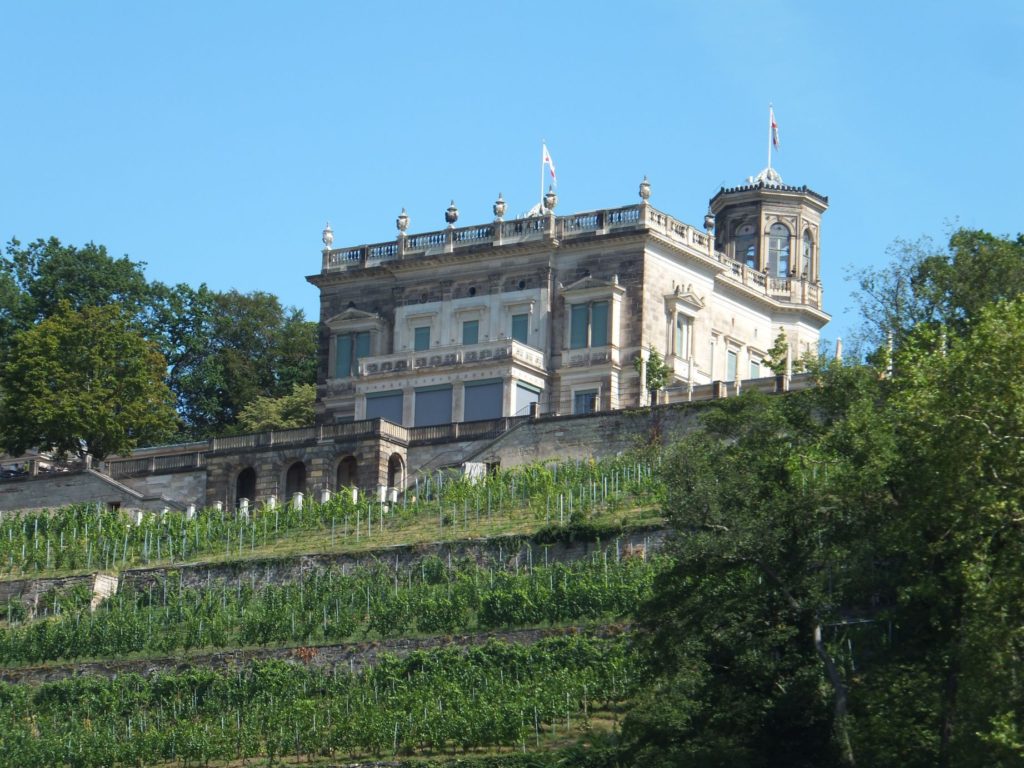 Wine grows here. As do beautiful buildings.
Wine grows here. As do beautiful buildings.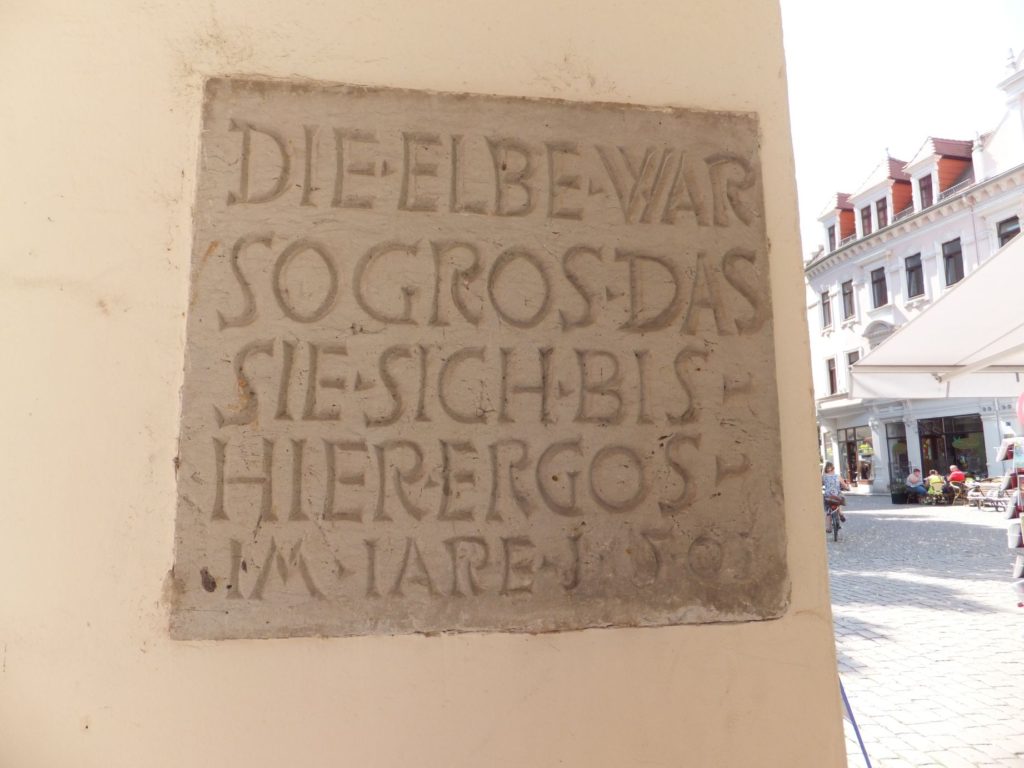 High water mark at a building in Meißen - dating to 1501, when one of the bad floods of the Elbe occurred.
High water mark at a building in Meißen - dating to 1501, when one of the bad floods of the Elbe occurred.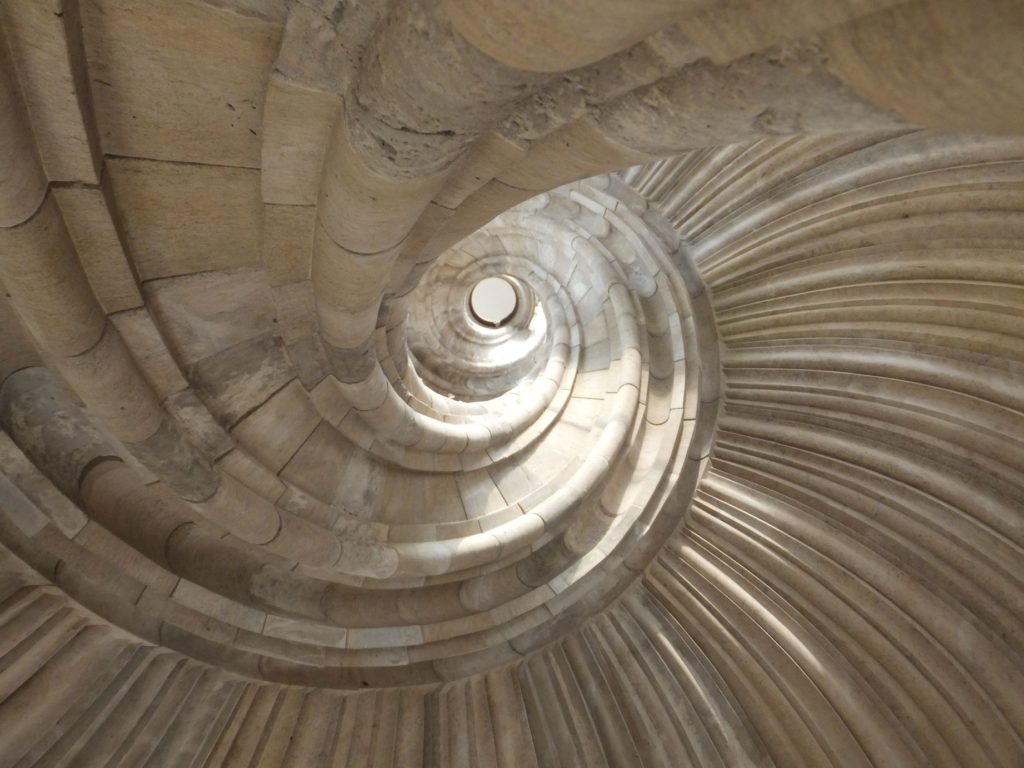 Wendelstein in Torgau
Wendelstein in Torgau